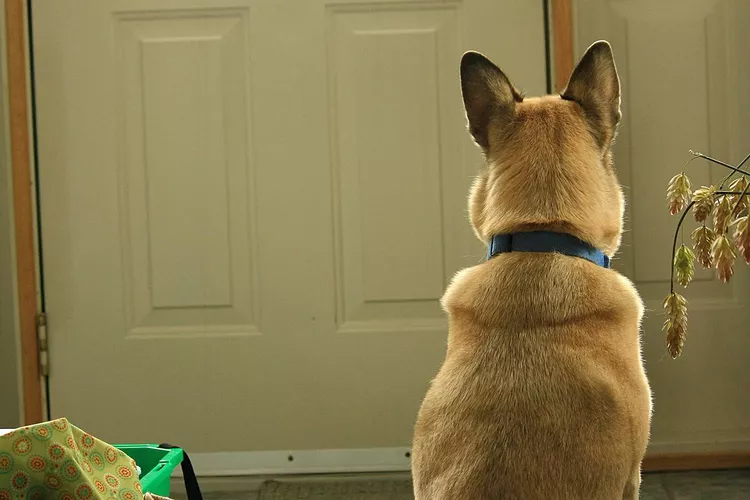How to Train Your Dog to Wait

The "wait" command tells dogs to focus on you, stay where they are and not move forward until you release them. This command is especially helpful to prevent your dog from bolting out the door or out of the crate.
Luckily, you don't need any special equipment to teach your dog how to wait. Instead of giving a food reward, you can simply teach your dog that responding to the command means being allowed to do certain things. While it can be a challenge to teach a new command, this one's fairly easy and useful in several situations.
Introduce the Command
Separate training sessions are not required to train your dog to wait. To practice, use the "wait" command every time you let the dog go outside or leave the crate. Once you begin working on "wait," your dog should never be allowed to bolt outside or lunge out of its crate.
When your dog is ready to explore the yard or leave the cage, start by giving the command "wait." Then, open the door a little bit, and see if the dog lunges forward to get out. If so, close the door quickly. Next, try to give your dog the command again. Each time you give the command, open the door slightly and close it quickly if your dog lunges forward to get out.
Reward Good Behavior
In the early stages of training, reward any hesitation. If you give your dog the "wait" command, and they hesitate, praise them and open the door. As you open the door, use a command that lets them know it's OK to move forward, such as "free" or "go ahead."
Once your dog begins to truly "wait" when you give the command, make it wait a few more seconds before the release. When your pet holds the "wait" command for several seconds or longer, you can begin to open the door a little wider. However, you should be ready to close the door quickly, in case your dog starts to bolt or lunge outside again.
Practice Patience
After practicing "wait" for a few days, your dog should be able to stand still with the door wide open until you give the command "free" or "go ahead" for release. Be sure to practice this from time to time and remember to frequently reward your dog for complying.
Wait for Other Things
You can also teach your dog how to wait in other contexts, like waiting for food. Self-control can be difficult a difficult thing for dogs to learn, but similar to the door exercise, you can use a food bowl filled with treats. Simply lower the food bowl toward the floor, and get it to your knee without the dog moving towards it. Move the bowl back up toward you if your dog moves. However, if you reach your knee and your dog behaves, offer a treat as a reward. Simply repeat this cycle until the command "wait" is understood.
You can use "wait" before you go outside for a walk on a leash as well. You may also want your dog to wait before getting out of the car or at the top of the stairs while you go to the basement. Anytime when it's in your dog's best interest—safety and self-discipline—is a good time to use this command.
Problems and Proofing Behavior
As with any training command, be sure to use "wait" regularly to reinforce the lesson throughout your dog's life. Soon enough, it will likely become second nature to both of you.
If you find that your dog begins to disregard the command, go back to the beginning. Do a few training sessions at the door to help them relearn the good behavior you're asking for. It shouldn't take as long this time because it's simply a refresher course.
You can also take this command to the next level and introduce a trick. For instance, many dog owners train their dog to not touch a ball or favorite toy until directed to do so. Once your dog understands the command, sit them down then slowly place the toy in front of them while saying "wait" and stepping back. Stop the dog from approaching the toy and return it to its original position if the dog picks it up.
With patience and consistency, your pup should only touch the toy after getting your permission. This approach is also useful for training a dog to hold a treat on its nose and other fun self-control tricks.